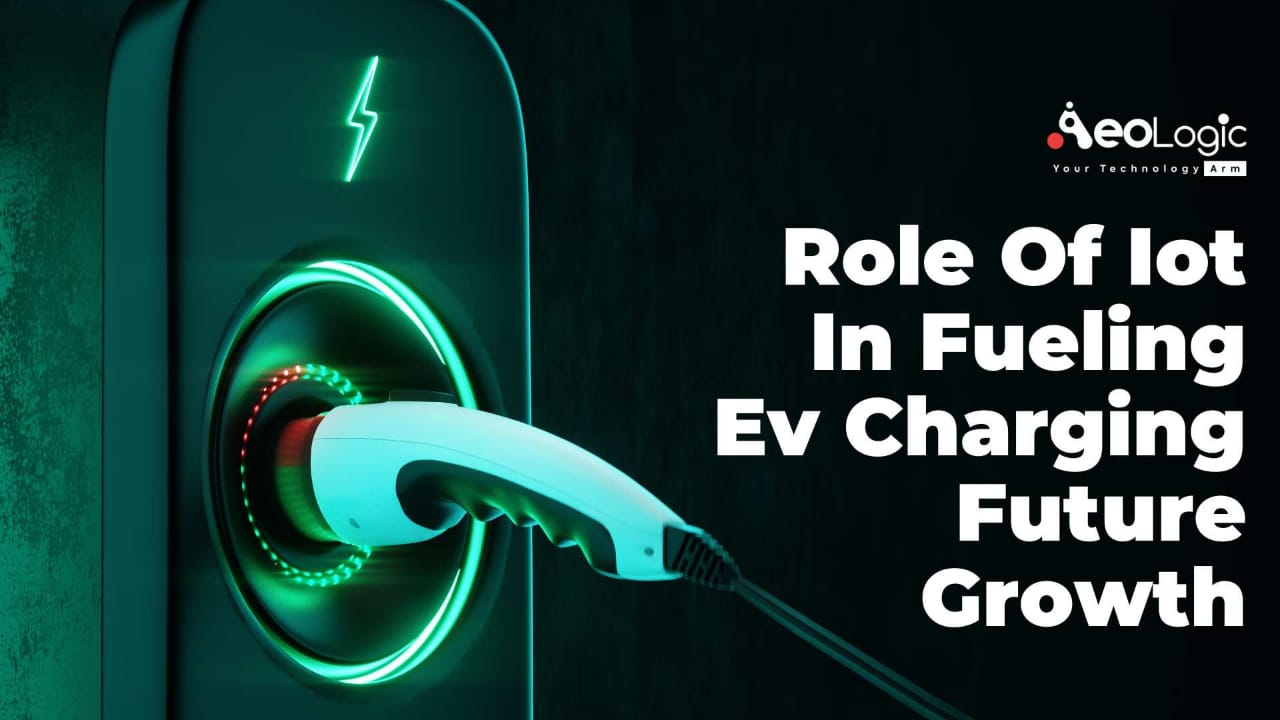Unlike non-linked gasoline fuel stations, EV charging stations are connected devices. They are integrated with various third-party service providers such as e-MSPs, energy suppliers, and charge point operators. They use various protocols & connectivity options and back-end cloud infrastructure to offer seamless charging operations. Such as payment processing, software updates, predictive maintenance, scheduling, and usage analytics. The role of IoT in fuelling EV charging is huge. Since it streamlines all other various processes which are discussed further in the article below.
In addition to all the factors favoring EV adoption, the key to success lies in the development of a robust charging infrastructure. The real challenge is not about installing a huge number of charging stations. However, the ability to remotely handle and smoothly operate dispersed devices.
Also read: Why the Future of Electric Vehicles is in the Cloud
IoT in EV Charging
The role of IoT in fuelling EV charging can be viewed as a convergence of OT (Operational Technology) and IT (Information Technology). While OT deals with the operations of physical properties such as sensors, devices, and connectivity, IT focuses on the digital transformation aspects.
A single charging session generates a large number of service requests and telemetry data. This may be in form of electric vehicles sending battery capacity data, EVSE sharing power consumption, energy suppliers sharing available grid limits, and troubleshooting data.
IoT in EV charging is allowing continuous monitoring and presenting data in form of reports & dashboards. Also, it is helping in notifying users in the event of critical failures or important updates. Charge point operators can remotely troubleshoot devices without the need for a physical visit. Furthermore, network operators can improve roaming services for their charging network.
Use cases of how IoT can transform the EV charging experience
The role of IoT in fuelling EV charging has a huge potential to offer advantages to all stakeholders. Such as in the value chain including the EV drivers, Charge Point Operators (CPOs), and network operators. Therefore, I have summarized some of the key use cases & benefits of IoT in EV charging.
User authentication
As soon as an individual taps his RFID card/tag or uses a smartphone for access, the charging station sends this information to the IoT platform over the cloud. The IoT platform then checks the driver’s profile, performs Authentication, Authorization, and Accounting activity, and certifies secure transactions and billing.
Charger availability
Another role of IoT in fuelling EV charging is checking the charger availability. Similar to booking a seat at a restaurant, the EV charging app can look for nearby stations, check availability, and hence, reserve a slot for the required time. That too is based on the battery capacity. Additionally, the app can also indicate charging rates or advise off-peak hours for low-cost charging.
Automated operations
While the driver is away and EV is charging, the station can send a notification to drivers of the exact charging time left, any error in cable connection, and automatic payments. In addition, it can even call for emergency assistance in case of any critical events working autonomously.
Smart charging
Energy rates change during seasons. For example, summertime with ample solar energy production and demand during peak hours during the day. The chargers can then automatically start charging when they find the lowest rates available from the grid and vice versa. Ultimately, this helps in saving costs. And also helps grid operators in managing the surge in energy demand.
Remote management
IoT allows Charge Point Operators to quickly settle issues. As well as it is enabling remote management of operations by presenting real-time metrics and insights into device performance and usage. Insights such as utilization, charger availability, fault monitoring, and troubleshooting are greatly helping in predictive maintenance and reducing downtime.
EVSE control
Another role of IoT in fuelling EV charging platforms is of collecting data from various sensory nodes. And analyzing vital metrics such as the grid limit, energy tariffs, EV battery capacity, and state of charge. Taking this data into consideration, it becomes easier to control and manage a large fleet of charging infrastructure.
Also read: How Technology is Strengthening the Future of EVs in India
Conclusion
Electric Vehicles are going mainstream with decreased battery prices, increased driving range, and options available from leading auto manufacturers than ever. Reliable charging infrastructure is a necessity for complementing EV growth.
More than just remote monitoring, IoT is a central block for developing next-gen applications like smart charging and vehicle-to-grid. Not only for EV drivers, but IoT is also equally significant and beneficial for everyone as it helps CPOs to avoid downtime and grid suppliers with energy management. And thus, creating a large roaming network for a seamless charging experience.
If you are interested in taking an initiative in the EV market and searching for industry experts, then kindly contact us at support@aeologic.com
FAQs
How EVs are using IoT?
IoT gives drivers the power to conduct remote control and management. It offers the possibility for charging stations to modify services to EV drivers and respond in real time to unexpected events.
What are the future trends of IoT?
With all this information, the utilization of AI and machine learning will be important. Because of this, Gartner anticipates that over 80% of IoT initiatives will be paired with AI by the end of 2022. For example, Voice AI and Vision AI at scale seem to be impossible without the help of the IoT.









